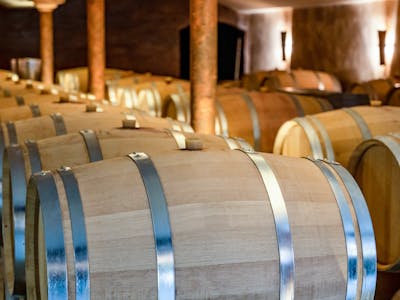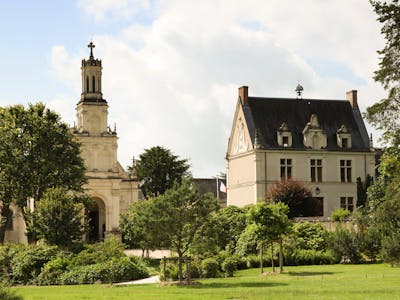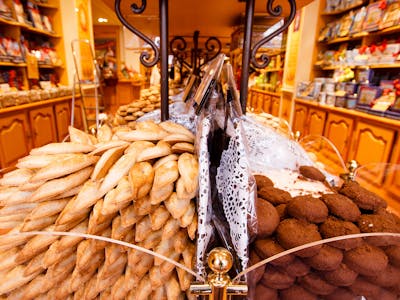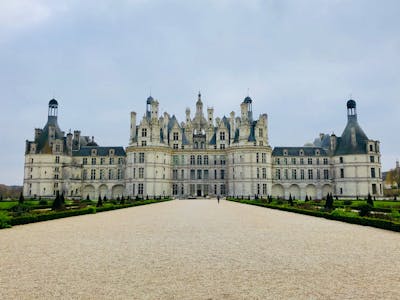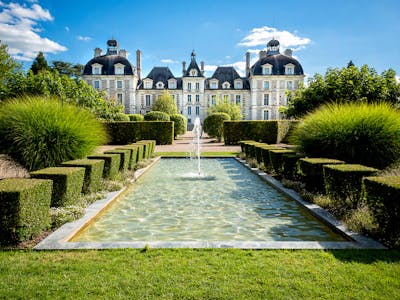The Château de Chambord is an architectural marvel located in the Loire Valley of France. With its distinctive French Renaissance design and grandeur, it stands as a testament to the opulence of the era. A visit to Chambord offers a unique opportunity to immerse oneself in history, explore breathtaking landscapes, and admire the intricacies of this iconic château.
Château de Chambord in a Nutshell
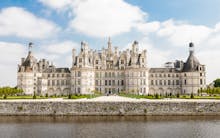
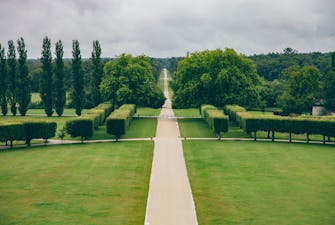
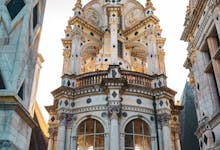
Handy information
| ⏰ Suggested Duration: | 2-3 hours |
| ☀️ Best Time to Visit: | Early morning or late afternoon |
| 🎟️ Entry Ticket: | €13.90 |
| 🚇 Closest Train: | Blois Chambord station |
Must-see at the Château de Chambord
- The Double Spiral Staircase
- Royal Stables
- The Gardens
Getting There
Address
Château, 41250 Chambord, France
Get Directions
Opening Hours
9 AM to 5 PM
Closed on 1 January, 30 November, and 25 December
Why is Château de Chambord worth visiting?
- Majestic Architecture: Admire the impressive Renaissance architecture of the château, with its intricate details and iconic double spiral staircase.
- Rich History: Learn about the fascinating history surrounding the château and its famous residents, from French kings to prominent governmental figures.
- Beautiful Gardens: Stroll through the breathtaking gardens surrounding the château, featuring a blend of French and English landscaping styles.
- Interactive Exhibits: Explore the various exhibits and interactive displays that bring the history and culture of the château to life, including 360° and audio tours.
- Wildlife Encounters: Spot the various species of birds, stag, and other wildlife that call the surrounding forests home, adding an element of natural beauty to the visit.
Recommended Château de Chambord Tickets
Depending on the kind of experience you seek and time in hand, you can choose from a variety of Château de Chambord tickets.
Château de Chambord History
Constructed in 1519 under the patronage of King François I, the Château de Chambord in the marshy lands of Sologne, France, is a testament to the power and grandeur of the French Renaissance. The palace features a remarkable double revolution staircase, inspired by Leonardo da Vinci, which spirals from the first floor to the terraces crowned by the Lantern Tower.
The castle's completion and surrounding development took place during the reign of Louis XIV in the 17th century, with stables built and the river Cosson partially channeled. In the 18th century, interior renovations were undertaken to enhance the castle's comfort and warmth.
Despite being looted during the French Revolution, the Château de Chambord miraculously escaped destruction. In the 19th century, it became a private residence and was eventually acquired by the State in 1930. During World War II, Chambord served as a sanctuary for thousands of artworks, protecting national treasures from bombings and Nazi confiscation. Today, Chambord stands as a magnificent historical monument and a repository of artistic heritage.
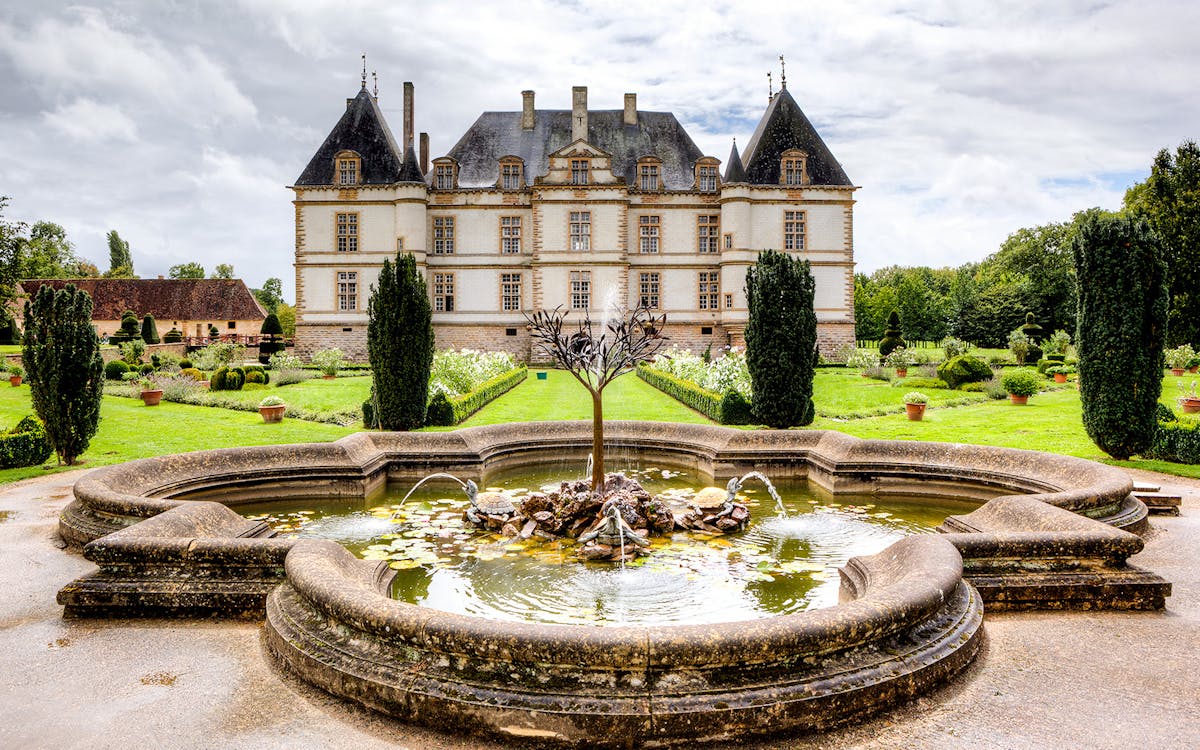
Château de Chambord Architecture
The architecture of the Château de Chambord is a stunning display of French Renaissance design. The château's exterior is characterized by its symmetrical layout, elaborate ornamentation, and distinctive French roofs with pointed turrets and chimneys. The centrepiece of the castle is the renowned double revolution staircase, a masterpiece inspired by Leonardo da Vinci's genius. This grand staircase features an ascending spiral design that allows two separate flights of stairs to intertwine without crossing paths, leading from the first floor to the terraces. The castle's facade boasts an array of ornamental details, including sculpted figures, medallions, and decorative friezes.
Internally, the Château de Chambord showcases opulent chambers and apartments. The interiors exhibit a blend of Gothic and Renaissance styles, with intricately carved woodwork, parquet floors, and ornate ceilings. The castle's numerous rooms, such as the Royal Chambers, the Council Room, and the Chapel, exude elegance and craftsmanship.
Highlights of Château de Chambord
1Garden and Park Of Chambord
The Chambord Gardens, known as the "Garden of France," perfectly complement the majestic château, embodying the region's leisurely and royal ambiance. These gardens not only enhance the grandeur of the château but also have a fascinating history, linking it to the surrounding forest.
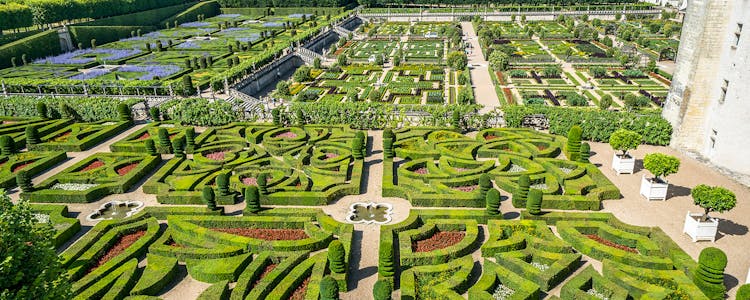
2Double Helix Staircase
The iconic "Double Helix Staircase" at Château de Chambord, believed to be influenced by Leonardo da Vinci, is a unique feature in France. Resembling the spiraling strands of DNA, this staircase consists of two intertwined helical ramps that elegantly connect the main floors to the glass-ceilinged terraces.
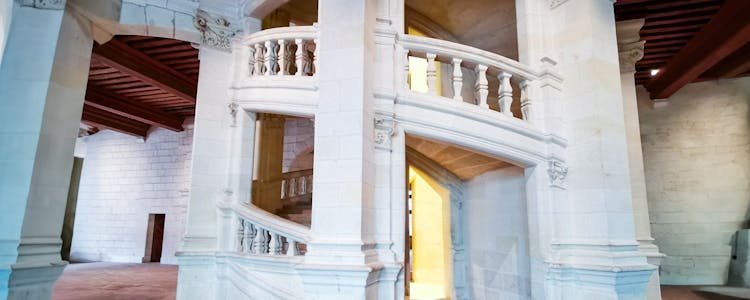
3 Royal Stables
The Château's expansive stables, originally built and expanded to accommodate over 1,200 horses, served as a hunting lodge for the king's entertainment during his annual visits. Visitors can enjoy horse-drawn cart rides, particularly during the summer months.
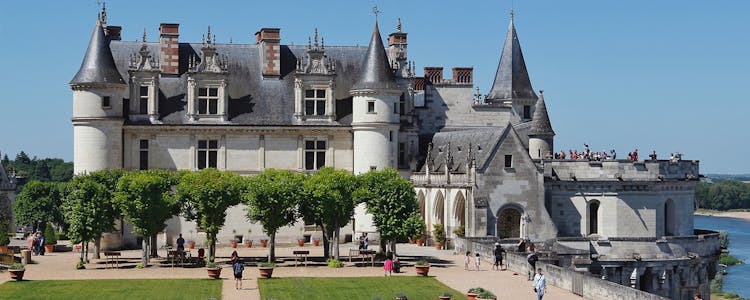
4Exhibition and Events
Château de Chambord hosts a variety of events and exhibitions throughout the year. Continuing its tradition as a centre for leisure and entertainment, the château showcases music festivals, performing arts events, and festivities such as equestrian shows and Christmas celebrations.
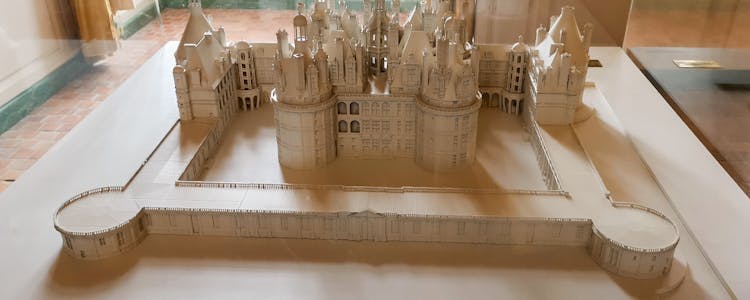
5Vineyards
The vineyards at the chateau produce a variety of exquisite wines. Visitors have the opportunity to explore the vineyards, learn about the winemaking process, and indulge in wine tastings, immersing themselves in the rich viticultural heritage that accompanies the grandeur of Château de Chambord.
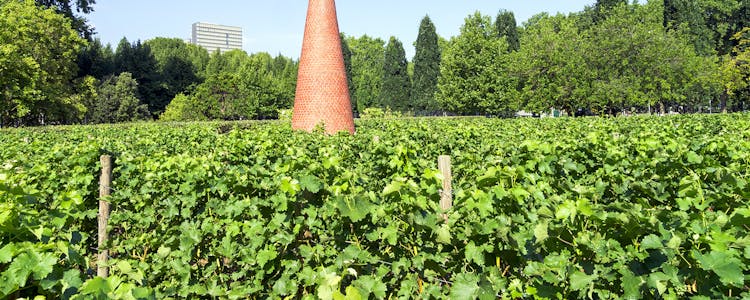
Best Time to Visit Château de Chambord
The Château de Chambord is best experienced during the spring and autumn seasons. With mild weather and fewer visitors, you can leisurely explore the château and its surrounding grounds. Summer can be bustling and hot, making the shoulder seasons more desirable for a serene visit. Winter, although chilly and damp, offers a unique atmosphere with the possibility of enjoying the castle's grandeur in a more intimate setting.
Arriving early in the morning allows you to beat the crowds and fully immerse yourself in the splendour of the château. Plan for a minimum of half a day to delve into the fascinating history, meander through the gardens, and absorb the ambience of this remarkable destination.
Château de Chambord Timings
- Timings:
From 2 January - 27 March: 9 AM to 5 PM
From 19 May - 25 October: 9 AM to 6 PM
From 26 October - 31 December: 9 AM to 5 PM - Last Access:
To Castle: Half an hour before closing time.
Formal Gardens: Half an hour before Castle Closing Time. - Note: Closing Time On 24 and 31 December: 4 PM
- Closed On: 1 January, 30 November, and 25 December.
Getting There
Car
A10, A85, A71
Train and Shuttle
Intercités train
Train and Shuttle connects Paris to Chateau de Chambord. A shuttle service runs between Blois Chambord station to the Chateau, in the morning and late afternoon, connecting with the train to and from Paris Austerlitz station.
Insider Tips to Visit Château de Chambord
- While exploring the château, keep an eye out for hidden doors and secret passages. These intriguing architectural features were designed to allow discreet movement within the castle and provide a sense of mystery.
- Don't miss the opportunity to climb to the rooftop terraces. From here, you'll enjoy breathtaking panoramic views of the château's architecture, the surrounding park, and the beautiful Loire Valley landscape.
- Pack a delicious picnic and find a scenic spot within the expansive gardens. Enjoy a leisurely meal amidst the tranquil surroundings, taking in the beauty of nature and the château. It's a wonderful way to relax and fully immerse yourself in the ambiance.
- Venture beyond the château and delve into the nearby forest. Take a leisurely walk or rent a bicycle to discover the enchanting woodland paths, discovering hidden nooks and experiencing the natural beauty that surrounds the château.
- If possible, plan your visit during the quieter times of the day or year. Early mornings and late afternoons offer a more serene experience with fewer crowds. Additionally, consider visiting during the shoulder seasons of spring or autumn to avoid the peak tourist influx.
- Extend your Chambord experience by exploring the local wine scene. Visit nearby vineyards and wineries to sample the renowned wines of the Loire Valley, including the Cheverny and Cour Cheverny varieties.
- The Royal Stables of Chambord, located outside the main château, offer a fascinating glimpse into the equestrian history of the estate. Explore the stables, learn about the royal horses that once resided here, and catch an equestrian show during the summer months for a unique experience.
- Château de Chambord hosts various events and exhibitions throughout the year, ranging from music festivals to art installations. Check the schedule in advance and plan your visit to coincide with these cultural offerings, as they provide an added layer of entertainment and enrichment.
Château de Chambord Facts
- The château's design is believed to have been influenced by Leonardo da Vinci.
- Chambord has over 426 rooms, 83 staircases, and 282 fireplaces, making it one of the largest châteaux in the Loire Valley.
- The castle's construction took over 28 years and was not completed until the 16th century.
- It was originally built as a hunting lodge for King Francis I, who would spend a few weeks there each year.
- The château survived the French Revolution and was later restored during the 19th century.
- During World War II, Chambord served as a hiding place for precious artworks, including the Mona Lisa.
- The castle's grounds span an impressive 13500 acres, featuring gardens, forests, and a canal.
- The château has been a UNESCO World Heritage site since 1981.
- It attracts over 800,000 visitors annually, making it one of France's most popular tourist destinations.
- It inspired the Beast's castle in Disney's animated film "Beauty and the Beast."
Restaurants Near Château de Chambord
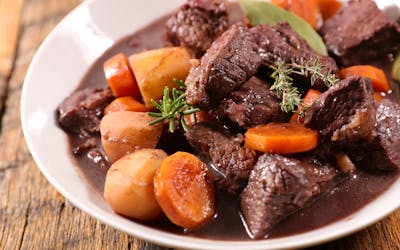
Located near Château de Chambord, Le Café d'Orléans offers a delightful dining experience with dishes such as their succulent beef bourguignon and classic French onion soup.
Distance from Chateau de Chambord: 140 m

Autour du Puits, a charming restaurant nearby, serves delectable French cuisine. Don't miss their signature coq au vin and heavenly crème brûlée for a truly satisfying meal.
Distance from Chateau de Chambord: 91 m

Le Relais de Chambord offers a refined dining experience with a focus on local ingredients. Indulge in their roasted duck breast with seasonal vegetables and finish with their decadent chocolate mousse.
Distance from Chateau de Chambord: 700 m
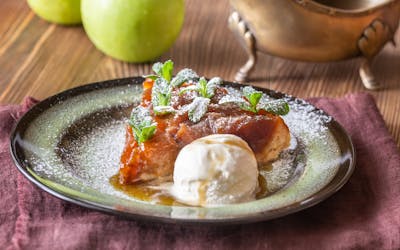
A cozy bistro, Le Grand Saint-Michel serves French comfort food. Try their tender boeuf bourguignon and finish with a classic tarte tatin for a delightful dining experience.
Distance from Chateau de Chambord: 450 m

Situated near the château, Les Armes Du Château offers traditional French cuisine. Savour their escargots de Bourgogne and enjoy a hearty plate of confit de canard for a truly authentic taste of the region.
Distance from Chateau de Chambord: 300 m
Places to Stay Near Château de Chambord
Things to Do Near Château de Chambord
FAQs
The Château de Chambord is approximately 476 years old.
The Château de Chambord was built by King Francis I of France.
Skip-the-line tickets for Château de Chambord are worth it, as during peak seasons you can easily move along quickly past the long queues.
You can reach Château de Chambord easily by car or and train.
Château de Chambord is closed on 1 January, 30 November, and 25 December every year.
Château de Chambord remains closed on Christmas and New Year.
No, there aren't any restaurants inside Château de Chambord. However, there are many eateries around the place.
Yes, there are washrooms present on-site at Château de Chambord.
There is no dress code for visiting Château de Chambord.



